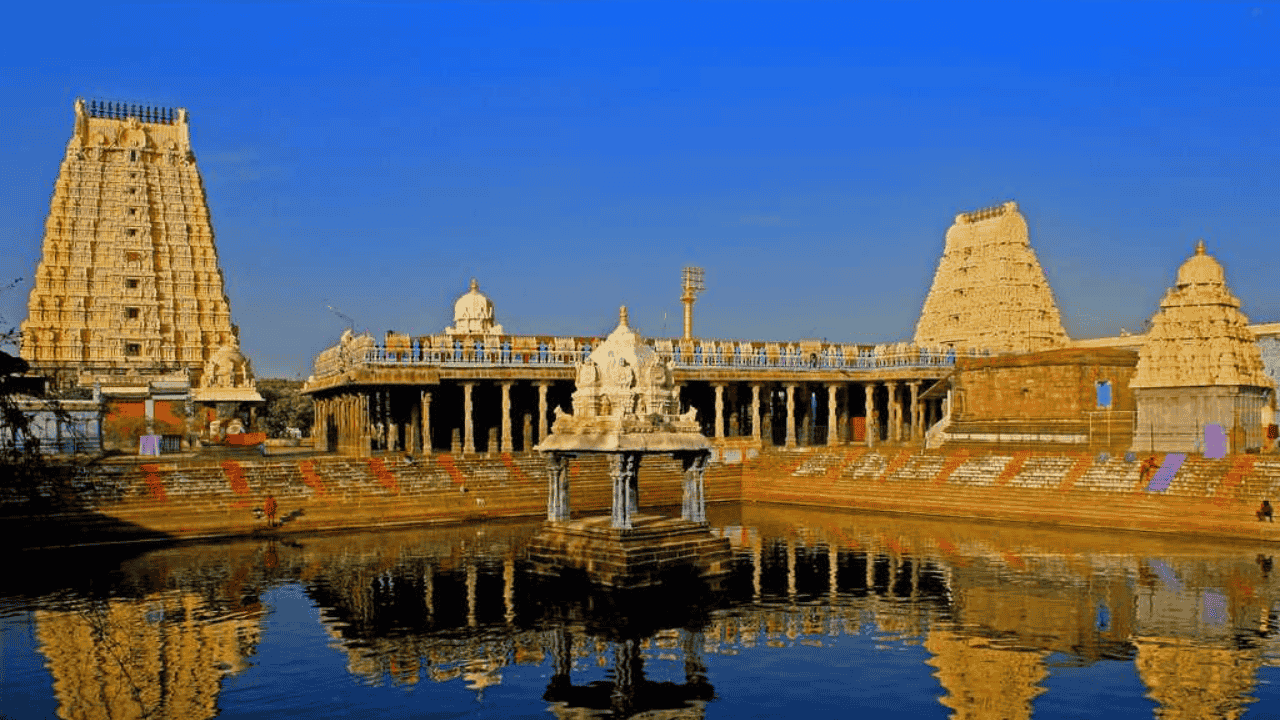The ancient Kamakshi Amman Temple in Kanchipuram, Tamil Nadu, continues to hold immense significance for UPSC aspirants, representing the convergence of India's architectural heritage, religious traditions, and administrative history. As one of the 51 Shakti Peethas and a key site in UNESCO's tentative World Heritage list since 2021, this temple exemplifies the rich cultural tapestry that competitive exam candidates must understand.
Historical Foundation and Administrative Legacy
Built during the 5th-8th centuries CE by the Pallava rulers, the Kamakshi Amman Temple showcases the sophisticated administrative and cultural patronage systems of ancient South India. The Pallavas, whose capital was Kanchipuram, established this temple as part of their broader cultural and educational infrastructure. The temple later received significant patronage from the Chola dynasty in the 14th century, demonstrating the continuity of administrative support across different ruling periods.
The temple's reconstruction in its current form occurred in 1783 CE, highlighting how India's heritage sites have been continuously maintained and renovated throughout history. This pattern of preservation reflects the administrative mechanisms that UPSC candidates should understand when studying heritage management.
Architectural Significance and Dravidian Heritage
Spanning 5 acres, the temple represents classic Dravidian architectural style with its distinctive features:
Central shrine housing Goddess Kamakshi in Padmasana (lotus position)
Surrounding sculptures of Trimurti (Shiva, Vishnu, Brahma)
Golden Vimana (tower) above the sanctum
Elaborate mandapams with detailed stone carvings
Spacious prakarams (corridors) for devotees
The temple's inclusion in UNESCO's tentative list alongside other Kanchipuram temples recognizes its outstanding universal value as part of India's cultural heritage.
Religious and Administrative Framework
Five Forms of Kamakshi
The temple houses five distinct manifestations of the goddess:
Sri Kamakshi Para Bhattarika - The main deity in the central shrine
Tapa Kamakshi - Worshipped in yogini form
Anjana Kamakshi - A special form of the goddess
Swarna Kamakshi - The golden form originally from Tanjore
Utsava Kamakshi - Used in festival processions
Shakti Peetha Status
As one of the 18 principal Shakti Peethas, the temple holds that Goddess Sati's navel fell at this location, making it a site of immense religious significance. This classification is crucial for understanding India's religious geography and pilgrimage circuits.
Adi Shankaracharya's Contribution
The temple's connection to Adi Shankaracharya represents a significant chapter in India's philosophical and administrative history. Shankaracharya's contributions include:
Installation of Sri Yantra to stabilize divine energy
Organization of temple rituals and festival management
Establishment of the Kanchi Kamakoti Peetha as a major spiritual center
The current Jagadguru Shankaracharyas continue to oversee temple administration, demonstrating institutional continuity that spans over a millennium.
Contemporary Administrative Structure
The temple operates under a structured administrative framework:
Daily Operations:
Morning timings: 5:30 AM - 12:15 PM
Evening timings: 4:00 PM - 8:15 PM (Extended on Fridays and Pournami days)
Four daily puja sessions including specialized rituals
Major Festivals:
Navaratri celebrations (September-October)
Masi Pooram and Aippasi Pooram
Sankara Jayanthi (April-May)
Vasanta Utsavam (March-April)
UNESCO World Heritage Significance
The temple's inclusion in UNESCO's tentative list since 2021 alongside other Kanchipuram temples represents India's commitment to preserving cultural heritage. With India now having 69 sites on UNESCO's tentative list as of September 2025, this temple exemplifies how ancient sites gain contemporary relevance through international recognition.
Educational and Cultural Impact
Historically, the temple functioned as a ghatika (center of education) during the Pallava period, where higher education in Vedas and Vedic scriptures was provided. This educational tradition continues today through:
Cultural preservation programs
Religious education initiatives
Tourism promotion contributing to local economy
Why this matters for your exam preparation
For UPSC Prelims:
Art and Culture: Dravidian architecture, Shakti Peetha significance, temple administration
History: Pallava and Chola dynasties, Adi Shankaracharya's contributions
Geography: Tamil Nadu's cultural geography, UNESCO World Heritage sites
For UPSC Mains:
GS Paper 1: Ancient Indian history, cultural heritage, South Indian temple architecture
GS Paper 2: Heritage conservation policies, administrative mechanisms in cultural preservation
Essay topics: Role of temples in Indian civilization, UNESCO World Heritage significance
For State PSC exams: Particularly relevant for Tamil Nadu PSC and other South Indian state services examining regional heritage and administrative systems.
Current Affairs angle: Understanding how ancient heritage sites gain contemporary relevance through international recognition frameworks like UNESCO, and their role in cultural diplomacy and tourism promotion.
The Kamakshi Amman Temple represents the intersection of India's ancient wisdom, architectural excellence, and modern heritage management - making it an essential study point for serious competitive exam preparation.






